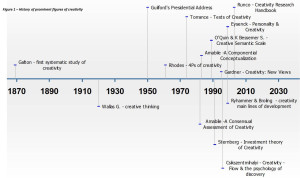Body art is art made on, with, or consisting of, the human body. The most common forms of body art used to be tattoos or body piercings… but the ever-innovative art world has evolved a long way from just this form.
For me body art must be tasteful–I will highlight three different forms of body art that have awed me of late: 1) Digital body art inspiring natural beauty 2) Healing tattoos and 3) Mimicking body art transformation
Look closely–the following is digital photography art composed entirely of the nude human form. Cecelia Webber is a multimedia artist who spent much of her childhood outdoors. Her website states: “Her deep appreciation for nature, along with her scientific background, give her a deep awareness of organic forms that she draws upon to concoct pieces bearing a unique interplay between colors, shapes, and models’ bodies.”
It is Webber’s flower series (using naked people!) that inspire me most.

Sunflower

Ink flower

White Dandelion

Jungle pink

Rose
My second example is Brian Finn, a tattoo artist who is helping others turn traumatic scars into symbols of strength. Finn who is from Toledo, Ohio, “gives forward” by inking over people’s scars from domestic violence, human trafficking or self-harm—for free.

A tattoo done on scars as a result of self-harm.

A skull and pistons, done on a survivor of domestic violence
Finn is booked with appointments to transform scars. His volunteer work is genius and to be admired–to this the humble artist says, “it’s simply the right thing to do.” He explains that he does it all to help others feel empowered. “It’s just something I can do that won’t take much time that can make a big impact on other people. A tattoo can help disguise the scars, so … it’s like a new chapter.”
My third selection of body art is body painting, which has been around for thousands of years. Every tribe on earth has used clay and other colorful natural pigments to adorn themselves–often in ceremonies. This has evolved into our modern use of cosmetics and makeup, albeit in a more conservative way.
Since the 1960’s there has been a revival of body painting due to changing attitudes of how we view our bodies. My next selection is simply elegant and enchanting–not to be missed!–by Johannes Stötter.
Johannes developed his unique bodypainting technique of his own accord without others’ influence. He joined the international bodypainting community in 2009 at the World Bodypainting Festival in Austria, where he competed in the world championship for the first time. He became world champion in 2012, and the awards (and his originality) just keep coming.
The creativity of the human being and spirit–and the beauty of our bodies–never ceases to amaze and thrill me. What new art forms have you recently discovered that inspire you? Rock on art world into 2017–more originality to come!
Thank you for reading my post. My core message of ‘everyone is creative’ resonates with people of all ages and walks of life. I invite all to become–the best version of themselves and find true meaning by pursing long term creative quests–in my recent book and website.






 There is a long history of major contributors to the subject of creativity. Here is a condensed timeline from 1870 to present (provided by Johnson Wong of Singapore).
There is a long history of major contributors to the subject of creativity. Here is a condensed timeline from 1870 to present (provided by Johnson Wong of Singapore).